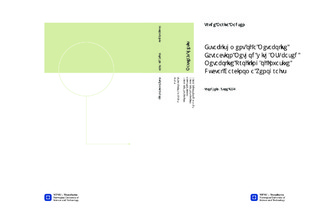| dc.contributor.advisor | Bruheim, Per | nb_NO |
| dc.contributor.advisor | Moestue, Siver | nb_NO |
| dc.contributor.author | Madsen, Trude Marita | nb_NO |
| dc.date.accessioned | 2014-12-19T13:15:04Z | |
| dc.date.available | 2014-12-19T13:15:04Z | |
| dc.date.created | 2012-11-10 | nb_NO |
| dc.date.issued | 2012 | nb_NO |
| dc.identifier | 566890 | nb_NO |
| dc.identifier | ntnudaim:8118 | nb_NO |
| dc.identifier.uri | http://hdl.handle.net/11250/245880 | |
| dc.description.abstract | Breast cancer is a complex disease comprising subtypes with varying clinical behavior, biological features and treatment response. Breast cancer heterogeneity characterized by different subtypes, is responsible for the high mortality among breast cancer patients, since patients with identical diagnosis can have very different prognosis. Metabolite profiles and biomarkers can hopefully be used for the improved diagnosis and optimal therapeutic treatment.The scope of this study was split in two parts. The first aim was to develop an optimal method for the complete extraction of polar and non-polar metabolites, from invasive ductal carcinoma xenografts. The optimization experiments were performed with tissue samples of a basal-like xenograft model (MAS98.12), and a Precellys 24 homogenizer equipped with a cooling unit. Polar metabolites were detected by absolute quantification analysis by gas-chromatography triple quadrupole mass spectrometry (GC-QqQ-MS) after methyl chloroformate (MCF) derivatization. Non-polar metabolites were detected as fatty acid methyl esters (FAMEs) by quantitative analysis by GC-Q-MS (single quadrupole GC-MS). TMS derivatization was also evaluated, but MCF derivatization was concluded to be a more sensitive method for the polar extracts than TMS derivatization. The complete extraction was achieved after three homogenization rounds with methanol and chloroform, respectively.The second aim was to use the optimal method in metabolite profiling experiments of luminal-like (MAS98.06) and basal-like (MAS98.12) xenografts, in addition to metabolite profiling of basal-like xenografts treated with a cancer drug called MK-2206. Polar metabolite profiles were obtained by absolute quantitative MCF GQ-QqQ-MS and compared by principle component analysis (PCA) and Student`s t-tests. The statistical analyses showed that the MAS98.12 xenograft has significant higher concentrations of lactate and glycine compared to the MAS98.06 xenograft, while the MAS98.06 xenograft has significant higher concentrations of O-acetyl-L-serine and aspartate. The untreated MAS98.12 xenograft has significant higher concentration of lactate than the MK-2206 treated MAS98.12 xenograft. Classification of breast cancer subtypes can therefore be made based on the polar metabolite profiles. Non-polar metabolite profiles were not found after flow injection (FIA) MS of a non-polar extract, much due to a limited research time. Both the extraction method and the metabolite profiles need further validation in the search for biomarkers, that can serve as prognostic tools from the development of breast cancer and determination of prognosis to the establishment of personalized treatment. | nb_NO |
| dc.language | eng | nb_NO |
| dc.publisher | Institutt for bioteknologi | nb_NO |
| dc.subject | ntnudaim:8118 | no_NO |
| dc.subject | MTKJ Industriell kjemi og bioteknologi | no_NO |
| dc.title | Establishment of a Metabolite Extraction Method with MS-based Metabolite Profiling of Invasive Ductal Carcinoma Xenografts | nb_NO |
| dc.type | Master thesis | nb_NO |
| dc.source.pagenumber | 132 | nb_NO |
| dc.contributor.department | Norges teknisk-naturvitenskapelige universitet, Fakultet for naturvitenskap og teknologi, Institutt for bioteknologi | nb_NO |

